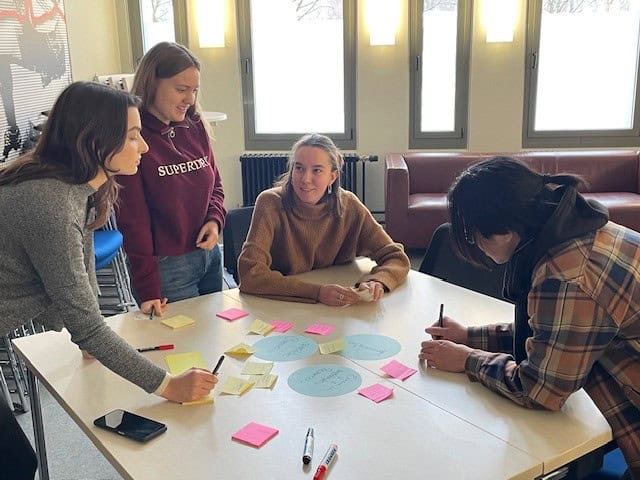Cultivating Tomorrow’s Leaders Through Comprehensive Youth Development
Young people represent our most valuable resource for creating positive change in communities around the world. Effective youth leadership development programs not only prepare young people for future roles but also harness their current energy, creativity, and perspectives to address today’s challenges. This comprehensive guide explores proven strategies for developing youth leadership capacity and creating meaningful opportunities for young people to make a difference.
Understanding Youth Leadership Development
What is Youth Leadership Development? Youth leadership development is a comprehensive approach that:
- Builds young people’s capacity to create positive change
- Develops critical thinking and problem-solving skills
- Fosters civic engagement and social responsibility
- Strengthens communication and collaboration abilities
- Promotes personal growth and self-confidence
- Creates pathways for meaningful participation in community life
Core Principles of Effective Youth Development Successful programs are built on fundamental principles:
- Youth as Assets: Recognizing young people’s current contributions, not just future potential
- Positive Development: Focusing on building strengths rather than just preventing problems
- Authentic Participation: Providing genuine decision-making roles and responsibilities
- Skill Building: Developing concrete competencies through hands-on experience
- Relationship Building: Creating supportive connections with peers and adult mentors
- Community Connection: Linking youth development to real community needs and opportunities
Essential Components of Youth Leadership Programs
Skill Development Areas Comprehensive youth leadership programs address multiple skill domains:
Communication and Public Speaking:
- Presentation skills and public speaking confidence
- Active listening and dialogue facilitation
- Written communication and digital literacy
- Cross-cultural communication competencies
- Media literacy and social media responsibility
- Conflict resolution and negotiation skills
Critical Thinking and Problem Solving:
- Systems thinking and root cause analysis
- Creative problem-solving methodologies
- Research and information evaluation skills
- Strategic planning and goal setting
- Decision-making processes and frameworks
- Innovation and entrepreneurial thinking
Collaboration and Teamwork:
- Team building and group dynamics
- Consensus building and democratic decision-making
- Project management and coordination
- Leadership in diverse groups
- Peer mentoring and coaching
- Network building and relationship management
Leadership Experience Opportunities Meaningful leadership development requires real-world application:
Community Service and Civic Engagement:
- Community needs assessment and project development
- Volunteer coordination and management
- Advocacy and policy engagement
- Voter education and registration drives
- Community organizing and mobilization
- Social justice and equity initiatives
Peer Education and Mentoring:
- Peer counseling and support programs
- Educational workshop design and delivery
- Youth-to-youth training and capacity building
- New member orientation and integration
- Conflict mediation and resolution
- Academic tutoring and support
Organizational Leadership:
- Student government and council participation
- Youth board and committee leadership
- Event planning and coordination
- Fundraising and resource development
- Program evaluation and improvement
- Strategic planning and vision development
Program Design and Implementation
Assessment and Planning Effective programs begin with thorough assessment:
Community Needs Assessment:
- Identifying local challenges and opportunities
- Mapping existing youth development resources
- Assessing gaps in services and programming
- Understanding youth interests and priorities
- Engaging stakeholders in planning processes
- Establishing baseline measures and indicators
Youth Asset and Interest Mapping:
- Documenting young people’s existing skills and talents
- Understanding learning styles and preferences
- Identifying leadership aspirations and goals
- Assessing previous leadership experience
- Understanding cultural and family contexts
- Recognizing barriers and challenges
Curriculum Development Structured learning experiences that balance theory and practice:
Core Leadership Competencies:
- Self-awareness and emotional intelligence
- Vision development and strategic thinking
- Ethical decision-making and integrity
- Cultural competency and inclusion
- Change management and innovation
- Continuous learning and adaptation
Experiential Learning Methods:
- Service-learning projects with reflection
- Simulation exercises and role-playing
- Case study analysis and discussion
- Peer learning circles and discussions
- Community immersion experiences
- Real-world project implementation
Progression and Advancement:
- Beginning, intermediate, and advanced levels
- Mentorship transitions from participant to leader
- Specialization tracks based on interests
- Alumni engagement and ongoing development
- Leadership pathway planning and support
- Recognition and certification systems
Creating Supportive Environments
Adult-Youth Partnerships Effective youth development requires meaningful adult support:
Mentorship Models:
- One-on-one mentoring relationships
- Group mentoring and team approaches
- Peer mentoring with adult supervision
- Professional mentoring and career guidance
- Cross-generational learning partnerships
- Community leader engagement
Adult Ally Training:
- Understanding youth development principles
- Effective communication with young people
- Power-sharing and authentic partnership
- Cultural competency and inclusive practices
- Trauma-informed approaches
- Professional boundaries and ethics
Safe and Inclusive Spaces Creating environments where all youth can thrive:
Physical and Emotional Safety:
- Clear behavior expectations and consequences
- Anti-bullying and harassment policies
- Mental health support and resources
- Crisis intervention protocols
- Emergency procedures and safety planning
- Trauma-informed environment design
Inclusion and Diversity:
- Welcoming youth from all backgrounds
- Addressing systemic barriers and inequities
- Culturally responsive programming
- Multilingual resources and interpretation
- Accommodations for different abilities
- Economic accessibility and support
Measuring Impact and Success
Youth Development Outcomes Tracking progress across multiple dimensions:
Individual Development Indicators:
- Leadership skill acquisition and demonstration
- Self-confidence and self-efficacy growth
- Academic and educational achievement
- Career readiness and life skills development
- Social and emotional learning progress
- Civic engagement and community connection
Community Impact Measures:
- Projects completed and beneficiaries served
- Policy changes influenced or achieved
- Community capacity built through youth initiatives
- Social issues addressed through youth leadership
- Intergenerational connections strengthened
- Community assets developed or enhanced
Evaluation Methods Comprehensive approaches to measuring success:
Quantitative Measures:
- Pre and post-assessment surveys
- Skill demonstration rubrics and portfolios
- Participation rates and retention data
- Academic and life outcome tracking
- Community impact quantification
- Long-term follow-up and alumni success
Qualitative Assessment:
- Youth reflection journals and narratives
- Focus groups and in-depth interviews
- Peer and mentor feedback sessions
- Community stakeholder input
- Photo documentation and storytelling
- Case studies and success stories
Addressing Common Challenges
Engagement and Retention Strategies for keeping youth actively involved:
Recruitment and Outreach:
- Peer-to-peer recruitment strategies
- Partnership with schools and community organizations
- Culturally appropriate outreach methods
- Social media and digital engagement
- Family and community leader engagement
- Addressing transportation and accessibility barriers
Maintaining Interest and Motivation:
- Youth-driven programming and decision-making
- Variety in activities and learning methods
- Recognition and celebration of achievements
- Clear pathways for advancement and growth
- Relevant and meaningful project opportunities
- Flexible scheduling and multiple participation options
Resource and Sustainability Challenges Building programs that can endure:
Funding and Resource Development:
- Diversified funding portfolio development
- Corporate sponsorship and partnership building
- Grant writing and foundation relations
- Community fundraising and support mobilization
- Fee-for-service and earned revenue strategies
- Resource sharing and collaborative approaches
Organizational Capacity:
- Staff recruitment and professional development
- Volunteer engagement and management
- Board development and governance
- Systems and infrastructure development
- Quality assurance and continuous improvement
- Succession planning and leadership transition
Technology and Innovation
Digital Leadership Development Leveraging technology for enhanced programming:
Online Learning Platforms:
- Virtual workshops and training sessions
- Self-paced learning modules and resources
- Digital portfolio and reflection tools
- Online mentoring and support systems
- Virtual reality and simulation experiences
- Gamification and interactive learning
Digital Organizing and Advocacy:
- Social media strategy and campaign development
- Online petition and advocacy tools
- Digital storytelling and content creation
- Website development and maintenance
- Database management and communication systems
- Digital security and privacy training
Innovation and Entrepreneurship Preparing youth for the changing economy:
Entrepreneurship Development:
- Business plan development and pitching
- Social entrepreneurship and impact ventures
- Financial literacy and resource management
- Market research and customer development
- Product development and testing
- Networking and partnership building
Innovation and Design Thinking:
- Human-centered design processes
- Rapid prototyping and testing methods
- Creative problem-solving techniques
- Cross-sector collaboration and partnership
- Technology integration and digital solutions
- Sustainable innovation and environmental consciousness
Cultural Responsiveness and Equity
Inclusive Program Design Ensuring programs serve all young people effectively:
Cultural Competency:
- Understanding diverse cultural contexts and values
- Incorporating multiple leadership styles and approaches
- Addressing historical and systemic inequities
- Language accessibility and multilingual resources
- Family and community engagement strategies
- Traditional knowledge and wisdom integration
Equity and Access:
- Removing financial barriers to participation
- Addressing transportation and geographic challenges
- Accommodating different learning styles and abilities
- Providing wraparound services and support
- Advocacy for systemic change and policy reform
- Coalition building across diverse communities
Global Perspectives and Exchange
International Learning Opportunities Expanding horizons through global connections:
Exchange Programs:
- International youth leadership exchanges
- Virtual global collaboration projects
- Sister city and community partnerships
- Cultural immersion and learning experiences
- Language learning and communication skills
- Global citizenship and intercultural competency
Global Issues Engagement:
- United Nations youth programs and initiatives
- International development and service learning
- Climate change and environmental action
- Human rights advocacy and education
- Peace building and conflict resolution
- Global health and social justice initiatives
Building Pathways to Adulthood
Transition Planning and Support Helping youth navigate into adult roles:
Educational Pathways:
- College and university preparation and support
- Scholarship and financial aid assistance
- Alternative education and credential programs
- Internship and work-study opportunities
- Academic mentoring and tutoring
- Career exploration and guidance
Professional Development:
- Resume building and interview skills
- Professional networking and relationship building
- Workplace readiness and soft skills development
- Industry exposure and job shadowing
- Apprenticeship and skills training programs
- Entrepreneurship and business development support
Long-term Impact and Alumni Engagement
Alumni Networks and Continued Engagement Maintaining connections and leveraging experience:
Alumni Programming:
- Regular networking events and reunions
- Mentorship opportunities for current participants
- Board and advisory committee participation
- Advanced leadership development programming
- Career and professional development support
- Community engagement and civic participation
Impact Tracking and Documentation:
- Long-term outcome assessment and evaluation
- Success story documentation and sharing
- Research and best practice development
- Program improvement and innovation
- Resource development and fundraising support
- Advocacy and policy engagement
Conclusion
Youth leadership development represents one of our most powerful tools for creating positive change in communities and society. When we invest in young people with comprehensive, culturally responsive, and equity-focused programs, we not only prepare them for future leadership roles but also unleash their current potential to address pressing challenges and create innovative solutions.
Effective youth leadership development requires commitment, resources, and collaboration across multiple sectors and stakeholders. However, the returns on this investment – in terms of individual growth, community development, and social progress – far exceed the costs. Young people bring unique perspectives, boundless energy, and fresh approaches to persistent challenges.
As we face complex global challenges requiring innovative solutions and collaborative action, youth leadership development becomes not just an opportunity but an imperative. By empowering young people with skills, opportunities, and support, we create a pipeline of capable, committed leaders who will shape our communities and world for generations to come.
The young people we develop today will be the leaders who tackle climate change, address inequality, advance technology, and build more just and sustainable societies. Our investment in their development is truly an investment in all our futures.
Empowering youth today creates the leaders who will transform tomorrow.






